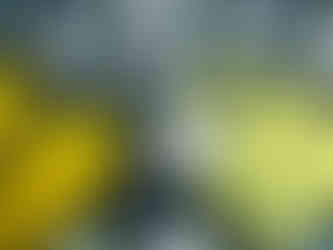Amateur Microscopy - A Different Way of Looking at the World
In a previous blog post (https://www.murdomorrison.com/single-post/science-education-during-the-pandemic) I talked about using microscopes as part of remote learning and education. In this post I would like to share my fascination with looking at the world at a scale that remains largely invisible to the naked eye.
I own two microscopes. The first is a Swift 380T compound microscope, the second is an Amscope stereo microscope. Each has different capabilities and function.The compound microscope allows me to view microscopic life either living or on prepared slides. The stereo microscope is useful for looking at such items as rocks, minerals, fossils, leaves, insects, etc, at magnifications which reveal details that would otherwise be hard to observe.

There are numerous prepared microscope slide sets available through scientific equipment suppliers but beginners often want to move on to creating their own. Microbehunter’s Youtube sites has a number of videos that show how to do this. After looking at a variety of items such as plant parts, insects, algae,etc., I soon wanted to look at living organisms. One of the simplest ways to do this is to collect a sample from a pond or puddle.
For some weeks now my son and I have been maintaining a sample of pond water sediment, plants, algae, and organisms in an uncovered Mason jar in a partially shaded area on our back patio. The sample is aerated with an inexpensive aquarium air pump. We top it up occasionally with some dechlorinated water (tap water that we have allowed to stand uncovered in sunlight). The sample was originally collected from a local fresh water pond. Small samples can be extracted from the jar using disposable plastic pipettes and a Petri dish. When collecting specimens I gently stir the pond water sample in the jar and try to include some of the algae and plant material, which is then transferred to the Petri dish. Living organisms are often found close to algae and use it as a food source.
Using a special slide with a slight concave depression I pipette a few drops of water, usually three to four, into the depression and gently place a thin cover glass over the sample. I begin viewing the slide with the 4x objective lens to scan the slide for signs of life. As I discover organisms moving around I switch to a higher power objective. The Swift 380T is a trinocular microscope, which has a third port for attachment of a Swift 18 megapixel dedicated microscope camera or my Panasonic GH4 mirrorless camera (using adapters that allow attachment). A variety of methods can also be used to capture images and video, including an eyepiece microscope camera and a smart phone using a special phone holder made for microscope use. My short video Life In a Jar (https://flic.kr/p/) gives a sense of the variety of life that can be observed.
It is also possible to observe the living process of plant cells. One method uses a grocery store onion. A small square section is cut from the onion and a single layer is extracted and placed on a drop of water on a slide. The complete technique can be seen at (https://youtu.be/quygiQgJ7b8) on Microbe Hunter's Youtube channel. Here is my short video showing living onion cells (https://flic.kr/p/2kY7PJB)
It is impossible in a short blog post to provide a comprehensive introduction to microscopy. The purpose here is
to inspire enthusiasm about the incredible wonders of the microscopic world. A great deal of information already exists and I encourage you to start by visiting Microbehunter.com. Another Youtube site that shows detailed and beautiful views of the microscopic world is Journey to the Microcosmos (https://www.youtube.com/c/microcosmos/featured).
My stereo microscope provides a different but no less fascinating way to look in more detail at all manner of objects. Again a number of affordable stereo microscopes are available for the beginner. My particular model, AmScope 3.5X-90X Zoom Trinocular Stereo Microscope with Table Pillar Stand, also has a trinocular port for attachment of a camera. This microscope also includes two Barlow lenses which allows a magnification up to 90x, more than adequate for rocks, minerals, fossils and other similar items.
I have always been interested in microscopes and the microscopic world but that interest increased during the Covid pandemic. It has been a rewarding pursuit. Each time I look at a sample I usually find something interesting. Capturing images and video has caused me to learn new skills including focus stacking, a technique designed to overcome the shallow depth of field at higher magnifcations. And there has been the excitement generated by observing organisms I have never before seen. They may not be new to science but they are to me and the sense of personal discovery is just as exciting.

I have also been learning about the great variety of microscopic organisms that exist in a small sample of pond water and even on ourselves. Some useful resources are:
A Guide to Cyanobacteria: Identification and Impact, University Press of Kentucky,
Guide to Microlife, Rainis, Kenneth G.; Russel, Bruce J.:
The Hidden Beauty of the Microscopic World, What the tiniest forms of life can tells us about existence and our place in the universe, James Weiss.
I hope this short account of my adventure in the microscopic world has inspired you to investigate it for yourself. There is something profoundly different seeing this amazing world with your own eyes than watching a video captured by someone else. I believe the difference results from the sense of awe and wonder that you feel when you realize that the entire community you are observing exists in just a few drops of water.

























Comments